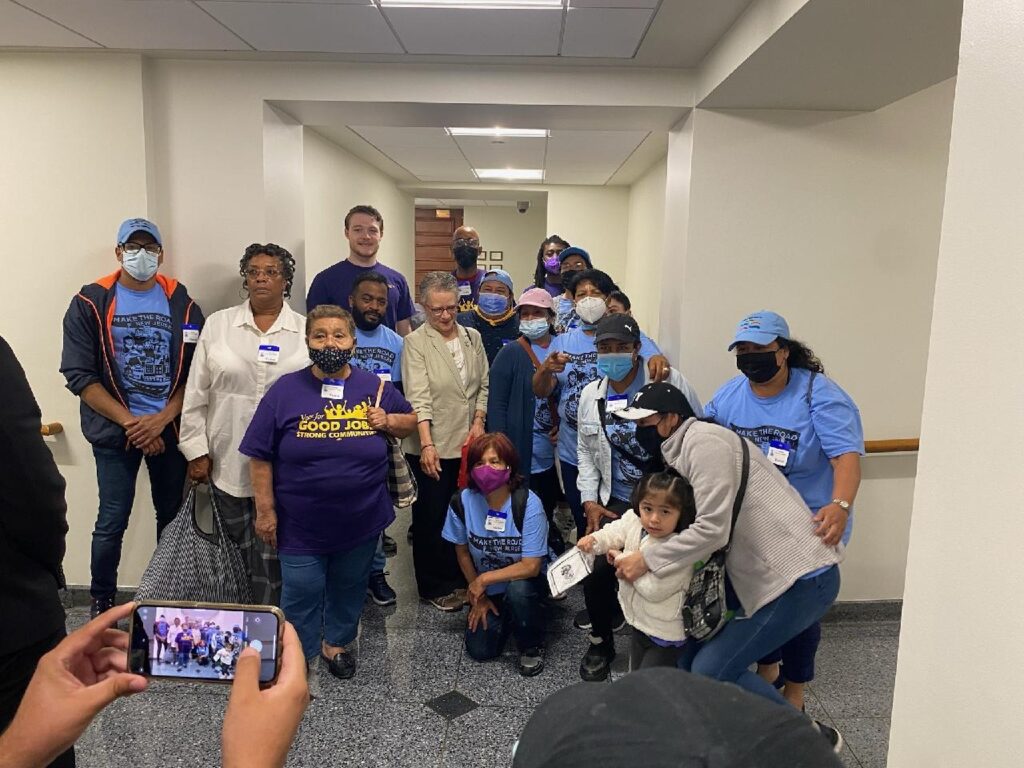The Perils of COVID Fog-Forgetting

On May 11th President Biden is planning to formally declare an end to the COVID national emergency. Currently, the nation is posting an average of 500 deaths a day from the deadly virus, roughly twice the number of daily deaths expected during a severe flu outbreak.
While the nation’s gets primed for the Beltway ‘all clear’, it’s important to note that as a practical matter, the United States has no idea of how many of the 1.11 million COVID deaths are linked to occupational exposures nor just how many American workers have been sidelined by long COVID.
That should be of particular concern here in New Jersey where close to 40,000 people died and more than that are likely disabled with long COVID. At certain key points in the first phase of this deadly ordeal, New Jersey was the global epicenter for the virus, with the world’s highest per capita death toll. In the fall of 2021 we lost that dubious distinction to Mississippi with 315 COVID deaths per 100,000 residents.
GLOBAL LEADER
New Jersey was running 306 per 100,000, well above the 281.9 deaths per 100,000 in Brazil, followed by Argentina, which reported 255.52 per 100,000. The United States as a whole ranked fourth on the planet at 209.32 deaths per 100,000, only slightly below the rate of Mexico, at 215.33, almost a third lower than New Jersey was at that point.
In a country where the lack of worker participation is a major economic issue, this should be a central concern of not just our federal government but every other level of government from the state house to city hall who all lost workers in that initial phase when we had no vaccines. Even as Washington gets ready to says it’s all over, we don’t know what the mid-term much less long-term consequences are for workers.
“The broader public health, social, and economic effects of long COVID are unclear,” the U.S. General Accountability Office [GAO] reported last year. “Studies in the U.S. estimate that 10 to 30 percent of COVID-19 survivors develop long COVID. If so, 7.7 million to 23 million people in the U.S. may have developed long COVID as of February 2022. In January 2022, the Brookings Institution conducted a meta-analysis to suggest that long COVID may be responsible for over 1 million workers being out of the labor force at any given time.”
As any public health expert will tell you, deconstructing how workers got infected is essential to getting our arms around a better understanding of how we can reduce transmission and community spread not if, but when, we are confronted with another lethal virus.
We have a moral obligation to society’s essential workers, so many of whom risked so much to keep the country running, to do this research so we can translate this massive tragedy into what could be real gains in public and occupational health which are inextricably linked.
Consider just how many lives have been saved in the generations since the notorious Triangle Shirt Waist Fire because we acted on the lessons gleaned from that mass casualty event when 146 mostly young immigrant women died in an early 20th century sweat shop in lower Manhattan.
NAMES THAT INHABIT THE NUMBERS
COVID stats are not just abstract to Kevin Brown, a vice-president, and NJ State Director for 32BJ SEIU, which represents 175,000 members that are primarily in the property service sector in 12 states including 40,000 in New Jersey.
“We had 150 32 BJ members, 26 of them from New Jersey, die from COVID and you’ll never know how many of them contracted it on the job—that’s a lot of members to die,” Brown said during a recent phone interview. “It’s a little strange to me that there was so much discussion about [indoor] air quality in the first three–four—five—months of the pandemic and then it all just dissipated, so to speak.”
Brown noted that Biden’s declaration that the COVID emergency was over didn’t change the fact that his members perform essential functions, which was made more apparent to society after the pandemic hit and public facing workers were broadly recognized as essential.
“We were essential prior to March of 2020, and now that we know we are essential they still haven’t really treated us that way,” Brown said noting that the NJ AFL-CIO’s request for $100 millions from Trenton for hazard pay for New Jersey’s essential workers was still outstanding.
Back in June, SEIU members joined scores of other labor activists working the corridors of Trenton lobbying for a New Jersey AFL-CIO sponsored initiative to extend hazard pay to front line essential workers performed at least 500 hours of work from March 16, 2020 to May 7, 2021 when vaccines became widely available. Full time workers would get $1,000 and part time workers $500.
“We’re not giving up on it,” Brown said. “We’re still advocating for our members who did work through the pandemic and still have not been acknowledged for that fact. They deserve to be treated and respected, whether it’s through the state recognizing that fact or passing legislation which says that.”
It would appear that whatever status society conferred on essential workers during the pandemic has waned and that there’s any downside to treating them as if they are disposable.
“I think one of the things that has come out of the post-pandemic that I am sensing from some employers is a sense of ‘we were nice to you during the pandemic but now we got to make some money, so whatever we need to do to make money we are going to do it,’” Brown said.
MUSK ABUSE
The week before Christmas, Elon Musk, the mercurial billionaire, with no warning up and fired dozens of union janitorial workers at Twitter’s San Francisco and New York’s office. The New York Times reported it was done so abruptly that “in some cases employees have resorted to bringing their own toilet paper to the office.”
According to Brown, 32 BJ SEIU is working with their allies in Trenton to pass the Worker Retention Law, to protect the state’s 40,000 union building service workers, and similarly situated contract workers, from such a summary indignity. The measure would require that when a building owner decides to dismiss their existing cleaning contractor and go with another just to cut costs.
Under the proposed Worker Retention Law, the incoming successor contractor would be required to retain the incumbent workforce for 90 days, unless there’s a just cause for termination. During the three-month grace period, the workers could demonstrate their capabilities, while providing service continuity.

On January 26, Sen. Troy Singleton (D-District 7) and Assembly Member Gary Schaer (D-District 36) joined members of 32 BJ SEIU, at a rally after they dropped off 3,000 postcards from supporters of the measure with the Assembly and Senate.
“When ownership of service contracts changes, employees and their needs can often be forgotten,” said Senator Singleton. “It is important to ensure that employees have job stability, even in transitions of management. We are coming off of the heels of a pandemic that catalyzed mass layoffs across the board. This bill will protect employees and their jobs, easing any anxiety that may arise when ownership changes, and will lay out the provisions that will be afforded to service employees.”
“New Jersey must become the second State to enact worker retention laws for our building service employees,” said Assemblyman Schaer. “Passing these historic labor protections will give vital job security to thousands of working-class families, expanding access to the American dream. Labor victories have been foundational to our nation’s economic prosperity; through this legislation we will establish financial stability for families disproportionately impacted by the Covid-19 pandemic and promote New Jersey’s continued recovery.”
“The worker retention bill finally protects New Jersey’s janitors, security, porters, concierges, and handypersons from unfairly losing their jobs due to a contract change,” Brown said. “Right now, if you choose to, you can dispose of hundreds and hundreds of workers at the flip of a switch with no cost or responsibility to those workers and that makes their lives precarious.”
And in a period when in just three years a virus could kill over a million, disabling even more, it would seem we owe it to each other to make things less random because life itself is already so precarious.








Leave a Reply